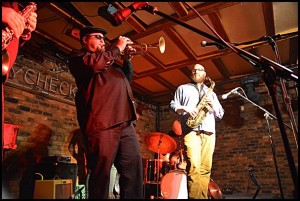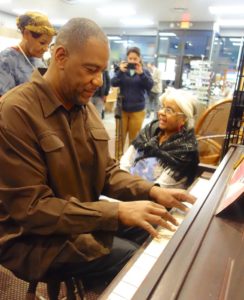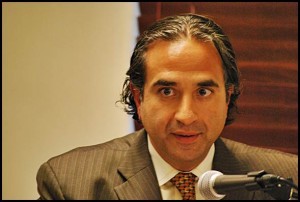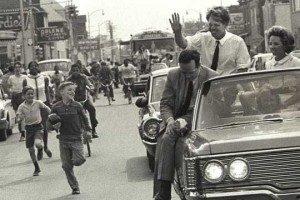Part one of our annual ‘Year in Review’ …
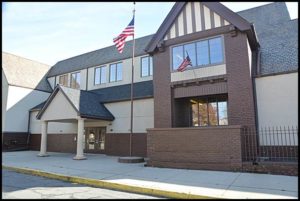
The Hamtramck Public School District enjoyed a huge boost in 2017, which was our “Newsmaker of the Year.” The district’s student enrollment continued to increase, which prompted school officials to purchase a building – the former Tau Beta Community Center.
By Charles Sercombe
Now that 2018 is about to take a bow, it’s time to look at what made the news.
As usual, there was plenty to talk about.
This week we’ll review the first six months of the year. Next week, we’ll follow up with the remainder of the year.
JANUARY
The year started out with a look back at what was the “Newsmaker of the Year” for 2017.
It was a story about what we called a “phenomenal comeback.”
And that was the Hamtramck Public School District.
Not only had the district climbed out of a $6.5 million budget deficit and turned that into an $8.1 million surplus in recent years, it also expanded.
For many years the district had to shed buildings as it struggled to rebuild its student body count in the face of competition from a dozen or so charter school options available to parents and students.
But the tide turned.
More and more parents found out that charter schools, in many instances, had much less to offer and returned their kids back into the traditional public schooling system.
The district boasted of having 3,326 students enrolled, up from 2,834 just four years previous.
The regrowth happened so rapidly that the district found itself in the unique position of needing more classrooms. An opportunity came knocking when a local charter school closed and the building it was in became available.
It took skillful negotiations, but the school district managed to snag the building, which also happened to have historical significance to the community. The former Tau Beta building on Hanley once served Hamtramck’s rapidly expanding Polish immigrant community back in the 1920s.
At the Tau Beta Center, immigrants were taught how to assimilate into their new country.
Many old-timers have fond memories of the building.
This rebirth came under the guidance of Superintendent Tom Niczay and the School Board.
Asked how the district managed to make this dramatic turnaround, Niczay said it all had to do with sacrifice and determination.
“The turnaround is because of a supportive Board of Education who work together extremely well,” said Niczay. “Their decisions are based on what is best for the district as a whole.”
As for the financial comeback, Niczay was quick to credit the district’s chief financial officer, Sherry Lynem, and her staff.
Helping out, too, were school employees, including teachers, who all had to take a financial cut to see through the rough times.
“We were extremely happy to make up lost wages and unfreeze salary steps during the most recent contract negotiations,” Niczay said.
For many readers January started out with a shock – as in higher-than-usual water bills.
One business received a bill for over $70,000. That business took a wait-and-see position until the city decided what to do about collecting.
Others had a more immediate reaction
Homeowner Sabur Ghazi received a bill for $10,000 for his two-family house on Danforth.
“I thought I was going to have a heart attack,” Ghazi told The Review.
So what was going on?
The bills were the result of new devices being installed throughout town. According to the new reading devices, many households received bills in the past that did not correctly transmit their actual water use.
In other words, the old meters were recording the correct amount used, but the device that electronically sent that information to the city was faulty and underreporting actual usage.
City officials eventually came up with a solution on how to charge homeowners and businesses: They had to pay only 40 percent of the past due owed.
But still, many have continued to grumble about their bills.
If the new water bills didn’t bum you out, an arctic blast of cold certainly did.
According to the Old Farmer’s Almanac, which some dismiss as a bunch of hocus pocus, the bitter cold would – and it did — continue along with heavy snowfall. It was all due to the low number of sunspot activity, plus some other factors the book did not reveal.
According to actual science, the blame went to the El Nino winds for last year’s unusual cold snap – and yes, more snow was predicted, and indeed it came.
The city asked for public feedback on what to do with the historic Hamtramck Stadium. An Open House was held at the public library where the public was given an update on the stadium’s condition and what renovations will be required.
A $50,000 grant from the National Park Service funded a study on what renovations are needed at the old ball park.
The stadium is considered historic because of the unique role it played in baseball history. The stadium was built in the 1930s to serve the Negro National League, during a time when African-Americans were not allowed to play in Major League Baseball.
The stadium was specifically home to the Detroit Stars. Legendary players like Satchel Page and Norman “Turkey” Stearnes played there.
The stadium was used as late as the 1980s, but then was abandoned and left to rot and decay. It wasn’t until several years ago that its historical significance was discovered.
We asked Mayor Karen Majewski, who was starting her fourth term, what were some of the challenges facing Hamtramck in the coming years.
(Spoiler alert: We are still facing these challenges.)
Here is what she said:
“Finances continue to be the biggest challenge. Obviously, we face some huge long-term expenses — our pension obligations, deferred maintenance on our streets and alleys, our inadequate sewer system. No surprise there.
“Deferred maintenance of many of our commercial buildings is also proving a serious deterrent to outside development. This will be part of the challenge facing — and signals the need for — a reinvigorated economic development department.”
FEBRUARY
The Hamtramck Public School District had nothing but good news to report at its State of the District presentation.
Superintendent Tom Niczay and his staff went through a number of accomplishments and goals to about 50 residents, teachers and district employees who gathered at the Hamtramck High School Community Center.
Financially speaking, the district boasted of a $9.5 million budget surplus.
But the district’s Director of Finance, Sherry Lynem, warned that there was talk in state and federal government to slash school aid in the coming years, which would require dipping into that surplus. Plus, she said, the district’s student enrollment could dip at any point, which would further reduce the budget cushion.
Because of this financial threat hanging overhead, Lynem said the district had to “resist the urge to spend.”
“Things can change very quickly,” she added.
The district also enjoyed a yearly increase in student enrollment, partly as a result in recent years of an influx of refugees fleeing war-torn Yemen. There were a little over 3,000 students in the district.
Out of that total enrollment, over 2,000 of the students speak a foreign language.
That language barrier has long been a challenge to the district. School officials have beefed up the number of teachers – now standing at 25 — who specialize in teaching English.
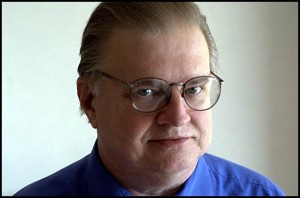
Author Greg Kowalski’s newest book about Hamtramck focuses on the city’s bars. It is his 10th book about the city.
Greg Kowalski, which one book reviewer dubbed “The Hemingway of Hamtramck,” remained as busy as ever.
He not only worked a full-time job in West Bloomfield’s city hall, but was –and remains — also chairman of the Hamtramck’s Historic Commission and Director of the city’s Historical Museum.
On top of all that, he has been chronicling Hamtramck’s history in book form for the last several years. He was celebrating the recent release of his 12th book: “They Drank to That: Bars, Beer and the Beat of Hamtramck.”
It focuses on the city’s bars, which goes back decades.
There is no shortage of colorful characters who have frequented Hamtramck’s famous – and infamous – watering holes.
Go to the city’s Historical Museum and grab a copy. It’s fascinating reading.
The city’s search for a new city manager hit a huge snag.
Some 39 people had applied to be Hamtramck’s next city manager.
But only three met the city’s charter requirements, and only one was recommended to interview for the job.
That was the result of a search performed by a private company called GovHR USA. The city council and mayor were presented with the findings at a special meeting.
The lack of candidates to interview led to some anguish among councilmembers. A suggestion was made to rewrite the charter requirements.
Even the search firm, GovHR, said the city charter’s requirements “significantly hindered the opportunity to vet additional candidates for the city manager position.”
Seven of the candidates who applied worked in executive positions in cities and counties with populations of over 100,000.
Hamtramck’s charter – at that time — required a candidate to have been a city manager or assistant city manager for at least three years in a community with a population of at least 10,000.
Councilmember Anam Miah was the only councilmember to vote against interviewing the lone candidate because he said the city first needs to change the charter.
“We should fix this, even if it puts the process back a little bit,” he said.

Despite his impressive credentials, Stephen Duchane, the former city manager of Sterling Heights, was passed over for Hamtramck’s city manager position.
As it turned out, the council did interview that candidate, the former city manager of Sterling Heights, Stephen Duchane.
Despite his impressive experience, the council later rejected him to fill the position.
Instead, the council began the process to change the city charter requirements. There is more to come to this story in the ensuing months ahead.
Hang on, it turned out well.
Baby it was cold outside, but Hamtramck’s yearly party, Paczki Day, was one hot ticket.
Thousands of partygoers once again roamed our streets to get their yearly pastry treat and then hit our bars where live bands played from early morning to late at night.
Considering the amount of alcohol that was consumed, it was once again a safe day.
This year, but the way, Paczki Day comes a little later in the year, on March 5.
The Hamtramck Historical Museum kept chugging along at high speed, even in the snowy doldrums of winter. Here are some of the triumphs and future goings-on:
The museum, located at Jos. Campau and Norwalk, continued to undergo a significant facelift.
Praise went out to the Painters & Allied Trades District Council 1M. Gone were the unpleasant aqua walls left behind by the building’s prior tenant, and the century-old tin ceiling was restored by the work crew as well.
Also, thanks went out to Mostek Paint and Glass, which put in all new energy-efficient windows at the back of both floors of the building. And getting into the helping mode were two dozen volunteer electricians, in town attending a national union conference for the International Brotherhood of Electrical Workers (IBEW), who finished a rewiring job.
Thanks to them the entire building was fully up to code.
MARCH
The month of March, it has been said, comes in like a lion.
It certainly did.
Just days after a state-appointed Receivership Transition Advisory Board decided to end it oversight of the city’s finances, the Michigan Department of Treasury announced that local control was fully returned to Hamtramck.
In other words, the city was “released” from receivership.
The state stressed that the main goal for the city was to have financial stability. The city now had a budget surplus of $6.5 million.
“Today marks an important achievement for Hamtramck residents, the city and all who have contributed to moving the city back to a path of fiscal stability,” said State Treasurer Nick Khouri in Friday’s press release. “I am pleased to say the city is released from receivership.”
The city had been under state oversight since 2014. That’s when an emergency manager was appointed to take control of the city. Emergency Manager Cathy Square stayed for 18 months and then appointed a city manager to take over.
After two years, that manager’s employment contract was not extended and instead city department head Kathy Angerer took over control as acting city manager.
That status would later change to a more permanent one.
The annual Hamtramck Music Festival was a celebration of the city and much more, wrote our City Life columnist Walter Wasacz.
Here is what he had to say about another wildly successful festival:
“With all due respect to the over 100 bands that performed at last weekend’s Hamtramck Music Festival: it was not about you.
“The place and the people in it are what matters in the end. This is the story that needs writing, telling and re-telling. Spread the word, Hamtramck: the story is about us.
“The city finds itself in a unique position at the intersection of geography, history, the here and now and what is yet to come.
“Hamtramck is, by its lived-in, frayed-around-the-edges nature, the ideal public reception center for art, music, dancing, conversation, food, fun — all the human activity that makes the world go round.
Anecdotal evidence also suggests more people walked from venue to venue at this year’s festival. The streets were as alive as the indoor spaces that hosted the musicians, DJs and fans. There was electricity in the night air, inside and out. We shout out a big hooray to that.”
A night dedicated to African-American history in Hamtramck turned into a celebration of song, food and fellowship at the Hamtramck Historical Museum.
The event was standing room only. But it was better to stand while listening to a choir sing traditional hymns often heard at neighborhood church services.
Museum director Greg Kowalski talked about the deep roots the black community has in Hamtramck, citing that migration from southern states began in the 1800s, then swelled when auto factories like Dodge Main were built in the first decades of the 20th century.
There were slides of African American leaders on both the village council and the first city council in 1922; police officers and detectives; and members of the school board. Another source of pride mentioned was the current renovation of Hamtramck Stadium, where Negro League games were played in the 1930s.
Kowalski pulled no punches in describing the history of discrimination against blacks in the city, including an over-40-year legal battle won by plaintiffs displaced from a southend neighborhood in what the city argued was an urban renewal project. Black residents said it was more about “Negro removal.”
The final slides of the program had simple but powerful messages, including these: “Yet (all) that was not enough to tear the fabric of Hamtramck, (which) has remained a strong community that in many ways is better than it has ever been. We are together as a community. Hamtramck is home for all of us.”
Hamtramck High School students joined students nationwide in a walkout during a school day.
The event, called a “controlled walkout” lasted for 17 minutes – one minute for each person killed a month earlier at Marjory Stoneman Douglas High School in Parkland, Florida.
It was there that a former student came into the school and killed 17 students and adults with an assault-styled weapon.
The purpose of the walkout was two-fold: to push lawmakers to adopt gun control laws and to memorialize those who died in Parkland.
Hamtramck students massed around the high school’s flagpole, with some students holding a poster with the name and photo of each person killed in Parkland.
Mahnaz Begum, an 11th grader, spoke at the gathering, saying that since the 1999 Columbine school shooting, 122 students have died in gun massacres. (According to FBI statistics, the number is actually higher at144.)
“Why are we still having this problem?” Begum asked. “How many lives have to be lost before gun laws are changed?”
Begum added that teenagers have easy access to guns.
“It’s time to take a stand and use our voices,” she said. “We stand with Parkland. Do you?”
That message was reinforced the following week when a Hamtramck High School student was arrested for phoning in a threat to “shoot up the school.”
School officials said the student wasn’t really going to shoot people. The student made the call, they said, because the student “didn’t want to go to school.”
Acting City Manager Kathy Angerer wasted no time in starting to reshape her administration now that the state has returned local control.
The first adjustment she made was replacing the city attorney. She introduced a resolution to replace John Clark with Jim Allen.
Allen was no stranger to the city. He had been in and out of city hall for the last several years. He originally came on board when Tom Jankowski was mayor in 2005.
His legal team was let go when a state-appointed emergency manager took control of the city.
The appointment of Allen caused a rift between Mayor Karen Majewski and her allies on council, Ian Perrotta and Andrea Karpinski. Allen has been a political supporter of Majewski.
The mayor supported Allen’s return, while Perrotta and Karpinski instead favored bidding out legal services.
“It just seems to me if we’re going to spend this much money, we should go for a bid,” Karpinski said.
She also added that hiring Allen “seems like a backroom deal.”
Majewski defended the hiring, saying Allen has expertise in a couple of city-related issues, such as establishing guidelines to allow medical marijuana dispensaries to operate here and putting a closure to the city’s decades-old housing discrimination lawsuit.
The resolution to hire Allen passed with Karpinski and Perrotta being the only councilmembers who voted in opposition.
APRIL
Despite the state recently saying Hamtramck was in good financial shape and deserved to have local control restored, Mayor Karen Majewski says there are still some issues.
In an interview with WDET-FM reporter Amy Miller, Majewski said the city will need to “dip into” its $6 million budget surplus.
She blamed that on the state’s handling of city finances when it was under the supervision of emergency managers. Majewski said despite the legal power emergency managers had, they failed to “solve the structural problems” that have plagued the city.
The main “structural” challenges, she said, are rising pension and medical benefit costs. The issue of pension costs is a problem most Michigan communities are facing.
The state attempted to address the pension issue when the emergency manager left her post three years ago by assigning consultants to help the city manager.
That city manager, Katrina Powell, told The Review that the consultants said they could not solve the problem. State legislators and the governor have also failed to work out a solution for cities.
With a new city attorney on board, city officials prepared to tackle a zoning question that had been long delayed.
Medical marijuana dispensaries have been legal for several years, but Hamtramck officials refused to take up a needed, critical step in allowing them to operate here.
To be specific, the city had to come up with a zoning law that designates where the dispensaries can operate and how many licenses to operate can be issued. Without those items in place, no dispensaries can open up.
According to officials, there were several would-be operators waiting in the wings to open up.
This issue took a number of twists and turns during the year. Stay tuned, you’ll read in part two of our year in review what happened.
Hamtramck was offered a helping hand from the state.
Gov. Rick Snyder came to town with Lt. Gov. Brian Calley to announce that Hamtramck would be part of his Project Rising Tide program.
The program was described by the state:
“The Rising Tide project supports vibrant, thriving communities to attract business investment and talent by creating a sustainable path toward economic stability and growth.”
Snyder was joined by some of his top administrators and key Hamtramck community leaders at the Polka Dot Café to talk about what the state can offer Hamtramck. It was stressed that it will be administrative resources.
What it won’t be, Snyder said, is the state cutting the city a check.
Snyder said he considers small cities to be the “backbone” of the state, and it’s a matter of: “How can we help you, help yourself?”
Not everyone welcomed Gov. Rick Snyder’s visit to Hamtramck, though.
Waiting for the governor’s arrival was Angel Salatrik, who lives across from where Snyder and city officials were meeting. On the front of her house was a giant banner that said: “Rick Snyder Poisons Kids!”
The sign was in reference to the Flint water crisis that occurred under Snyder’s administration.
There were also smaller signs, one of which said: “Liar.”
Salatrik said she thought the sign made an impact and that many in the city agree with her.
“I think a lot of the council and mayor agree with it, but can’t say anything.” Salatrik said.
City officials hoped to widen their choices on who becomes a city manager in Hamtramck.
At a special city council meeting, the council unanimously agreed to change the city charter requirements for those seeking the job as a city manager.
But that change in the charter would to have wait for voters to weigh in on it. Voters later did favor the change.
The former requirement called for a candidate for the job as city manager to have held that position — or as assistant city manager — for at least three years in a city with a population of at least 10,000.
City officials had complained those requirements were too steep and had prevented candidates who have similar experience but not the titles from being considered for the job.
The new requirements are:
“In addition to the required qualifications of the city manager provided elsewhere in this charter, any city manager hired shall have the following qualifications: a minimum of three years experience as a chief municipal administrator, assistant chief municipal administrator, or equivalent governmental experience, and be the holder of a degree from an accredited college or university.
“These qualifications may be waived by a three-fifths vote of the council and mayor upon considering other qualifications of any candidate for such position.”
Councilmember Anam Miah applauded the proposal, saying “it gives us the flexibility to hire a qualified person.”
MAY
Customers at Bumbo’s Bar, located at Holbrook and Mitchell, were the victims of a predatory towing company.
Customers who parked at the CVS parking lot at night found their cars had been towed.
One night five tow trucks from a Detroit company called Breakthrough Towing were lined up waiting to hook up cars and tow them away.
In some instances patrons at the bar were alerted before their car was towed out of the lot and for about $250 they could pay the tow driver to unhook the car and allow them to park somewhere else.
For those who were not lucky enough to catch the tow driver before leaving the lot, it cost them anywhere from $400 to $500 – in cash only – to retrieve their cars from the tow company’s lot.
The tow company has two signs on the back wall of the parking lot and one on the fence surrounding the CVS dumpster stating that those who park in the lot who are not doing business at CVS will get their car towed at any time.
But as it turned out, the manager of CVS said he was unaware of the signs and had not authorized Breakthrough to operate there.
The signs were eventually taken down and the tow company went away.
The election season was off and running.
As expected the open races for state representative and state senator for Hamtramck were crowded.
In the 4th District State Representative race, in which incumbent Rose Mary Robinson was being termed out, 14 Democratic challengers filed and one Republican candidate was also on board.
Robinson’s son, Isaac, was seeking to follow in her footsteps and keep the position in the family.
Spoiler alert: He won the election.
There were five Hamtramck residents running for the office, including City Councilmember Saad Almasmari, who was still in his first term on council.
Councilmember Anam Miah was also seeking to climb up the political ladder by seeking to become the new state senator in the 2nd District, which includes Hamtramck.
In the state representative race the following residents were running: MD Rabbi Alam, Justin Jessop, Michele Oberholtzer and Syed Rob.
In the race for state senator, Councilmember Miah and Hamtramckan Abraham Aiyash were among the 12 candidates seeking the job.
As it turned out, Adam Hollier, a former assistant to State Sen. Bert Johnson, who resigned because of a felony conviction, won the election.
Also facing election for the first time was Hamtramck 31st District Court Judge Alexis Krot, who faced off with challenger John Fitzgerald Gorniak, an attorney who had recently moved into the city.
Krot had been appointed to the position by Gov. Rick Snyder after Judge Paul Paruk resigned. She eventually won.
The year 2018 marked the 50th anniversary of Bobby Kennedy’s visit to Hamtramck. Hamtramck historian and author Greg Kowalski looked back at that day:
“Kennedy’s trip to Hamtramck in 1968 elated his supporters. He was in the running for president, and he carried a lot of momentum just by being a Kennedy, the brother of John F. Kennedy who himself had been slain by an assassin five years earlier. And both brothers had visited Hamtramck, John having been here in 1960 shortly before being elected president and again after the election.”
Just weeks later, Kennedy was gunned down in Los Angeles.
Hamtramck Public School teachers had their own version of a “walk-out” one morning.
For months students across the country staged peaceful “walk-outs” to protest school shootings.
Instead of walking out, Hamtramck teachers held a “walk-in.”
Teachers, who were also wearing red in solidarity with a national movement called #redfored, said it was a protest of state funding to school districts.
“It’s in support of our district,” said Jamie Jankowski, a math specialist at Dickinson East Elementary School.
Teachers at Dickinson gathered at the school’s entrance just before students arrived in the morning and walked around the building to the Edwin St. entrance.
Michelle Cook, the president of the teachers’ union, said Hamtramck does not receive proper funding.
“While there are many issues that our members care deeply about, today we want to shine a spotlight on the chronic underfunding of our public schools,” Cook told The Review.
Cook said that according to the School Finance Research Collaborative, the cost to educate a student in this state is $9,590 per student each year.
Hamtramck receives $7,631 per student.
Cook added that the base cost to educate students goes up for at-risk students (who cost an additional 35 percent) and those who do not speak a foreign language (costing 35 to 75 percent more).
Hamtramck is a unique district compared to the rest of the state. Out of over 3,000 students enrolled here, more than 2,000 speak a foreign language as their first language.
JUNE
Hamtramck’s monthly recycling program was in doubt.
The city’s Recycling Commission warned that the drop-off program held on the second Saturday of the month would end after Aug. 11.
The commission said it there was a shortage of volunteers to keep the program running.
There had been an ongoing interest among residents to have curbside recycling.
But city officials said that getting a company to perform curbside recycling is not possible. That’s because recycled items no longer produce an income for companies.

The city’s recycling drop-off center was closed down because of a lack of volunteers. City officials are still trying to figure out how to continue the program.
As it turned out, the monthly drop-off program did end. City officials are still working on a plan to bring back recycling.
Hamtramck’s alley repair program has begun its second year.
The city’s alley repair project was underway.
Work began on ripping up and repaving the alley on the west side of Conant, from Evaline to Norwalk.
Other portions of alleys along the westside of Conant were also scheduled for repair. On Jos. Campau, alleys on the west side of the street were slated for repair in early July.
The project cost almost $600,000. The city dipped into its budget surplus to pay $200,000 of that bill.
“This is a good use of the fund balance,” said Acting City Manager Kathy Angerer in reference to using budget surplus money.
The bulk of the money came from state funding.
Hamtramck’s historic baseball stadium scored big with Comerica Bank.
Comerica presented the Friends of Historic Hamtramck Stadium with a $20,000 check at a luncheon honoring the legacy of the former Negro Leagues.
Hamtramck Stadium was once the homefield for the Detroit Stars, which was part of the Negro League.
The stadium is both on the National Register of Historic Places and a Michigan State Historic Site. It is in need of major cosmetic upgrading.
The baseball diamond itself is not in usable condition, nor are the old concrete and wooden stands. The grandstands originally could hold 8,000 spectators.
The stadium is believed to be one of only five known remaining homefield stadiums from the Negro League era.
Comerica Bank developed a relationship with the Friends organization in 2014 when it sponsored the historical marker for the stadium.
“We’re honored to support this project,” said Michael T. Ritchie, President of the Michigan branch of Comerica, “and we hope our commitment inspires other organizations to help preserve this historic stadium.”
Dec. 27, 2018


